Using the data compiled from the Koolance HX thermal testing I have compiled the following tables in an attempt to show another way how the HX performance varies against itself at the flow rates and fan speeds tested. Let’s start with the raw data:
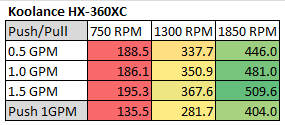 Now we can use these to show percentage gains relative to a reference point. It’s an interesting way to show gains/losses while changing a variable. This first table shows performance gain or loss relative to 1.0GPM flow rate:
Now we can use these to show percentage gains relative to a reference point. It’s an interesting way to show gains/losses while changing a variable. This first table shows performance gain or loss relative to 1.0GPM flow rate:
This shows that increasing flow to 1.5GPM has a steady gain while lowering flow to 0.5GPM only affects higher airflow performance.
We can also focus on 1300RPM as our reference and see how much gain or loss in performance we get by changing fan speed:
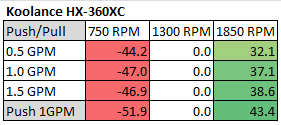
As expected the change is dramatic. Lastly we can combine both and choose 1300 RPM and 1.0 GPM as our reference point to show both effects concurrently:
So from the data above we can get a very good idea of how the Koolance radiator performs relative to itself. But there is a large selection of 360mm radiator models to choose from, released from numerous manufacturers. So, we need to start comparing performance between them. To see how the HX performed against the other radiators in this group I have included the averaged flow rate comparison charts from the Round Up. We know that the flow rate has little impact on thermal performance so averaging of the 3 flow rate results gives us a good look at head to head performance at the rpm speeds tested at with even less error.
Let’s start off with the Push only data first:
750RPM in Push will most likely be the worst case performance for a high FPI radiator like the Koolance. The result here then is no surprise.
At 1300 RPM the HX-XC is already starting to climb up the rankings.
At 1850RPM it is now near the top. Now let’s look at Push/Pull data where we would expect it to do even better!
750RPM is still too low for the HX-XC to shine even with push/pull.
At 1300RPM the HX-XC is already starting to shine and ends up in 4th place.
Now at 1850RPM the HX-XC performs excellently, only beaten out by the Black Ice GTX which is another radiator designed purely for high static pressure, high airflow situations.
Using only the 1GPM data we can then combine the Push and Push/Pull data for an interesting though busy plot:
At 750RPM as we know the HX-XC won’t perform well, and at these speeds there are many better choices with even some Push only setups beating out the push/pull.
At 1300RPM you can really see the difference that the extra fans make to the HX-XC’s performance.
Once at 1850RPM the HX-XC is in it’s element.
From all of these results we can create a “master performance factor”. The radiator with the best cooling ability (W/10ΔT) at each gpm/rpm combo was awarded a score of 100, and each other radiators W/10ΔT result was scored as percentage of the top performer:
This clearly shows the performance skew. Then all the percentage scores were averaged giving us the Averaged Performance Factor of each radiator. This way of looking at the comparison takes away any advantages that a radiator may have at higher or lower fan speeds and looks at an overall average. While this appears fair it does tend to favor those radiators that are all rounders and those radiators which do very well at high RPM. Most users should be more focused on their specific use case. Check in the Round Up for performance comparisons at every gpm/rpm combo for even more details and cross comparison results. Let’s start with Push only again:
Unsurprisingly the HX-XC suffers in Push only. Despite a good score at 1850RPM it’s severely hampered by it’s low performance at lower RPMs.
In Push/Pull though the HX-XC is one of the better performing radiators finishing in 5th place thanks to it’s great performance at 1850RPM.
Next up – Summary!








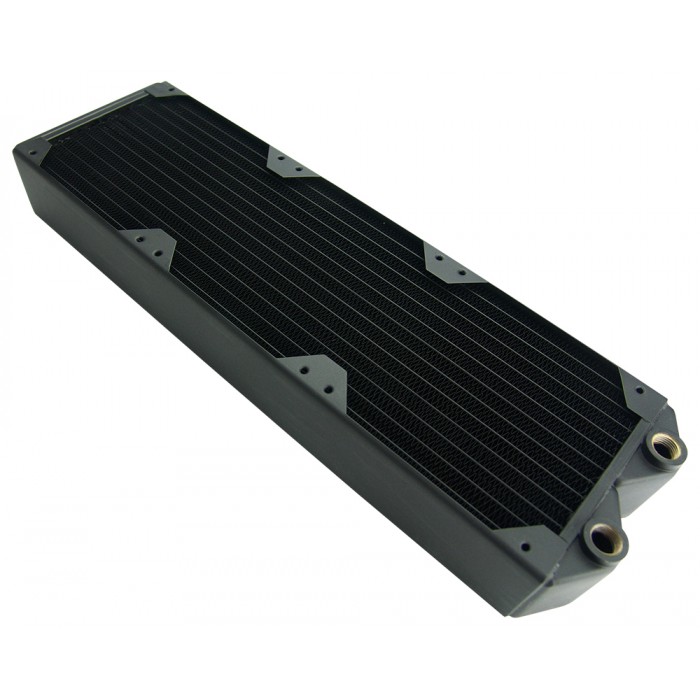
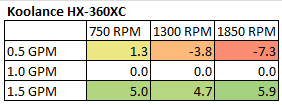
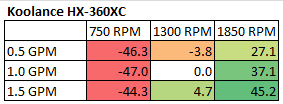
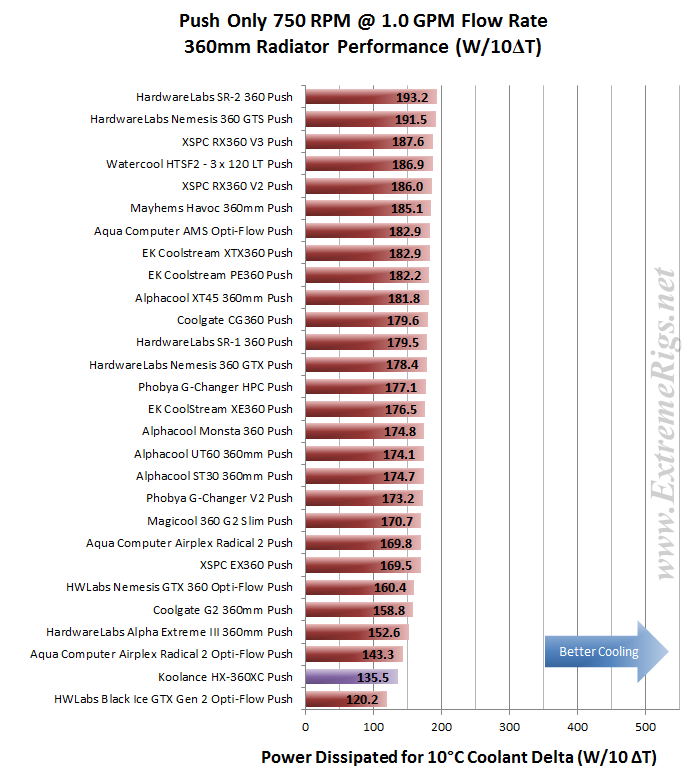
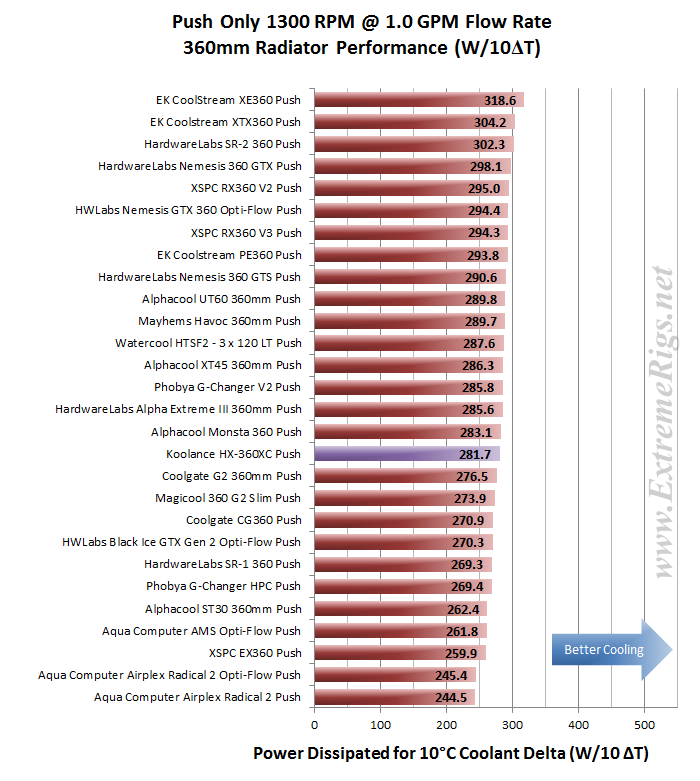
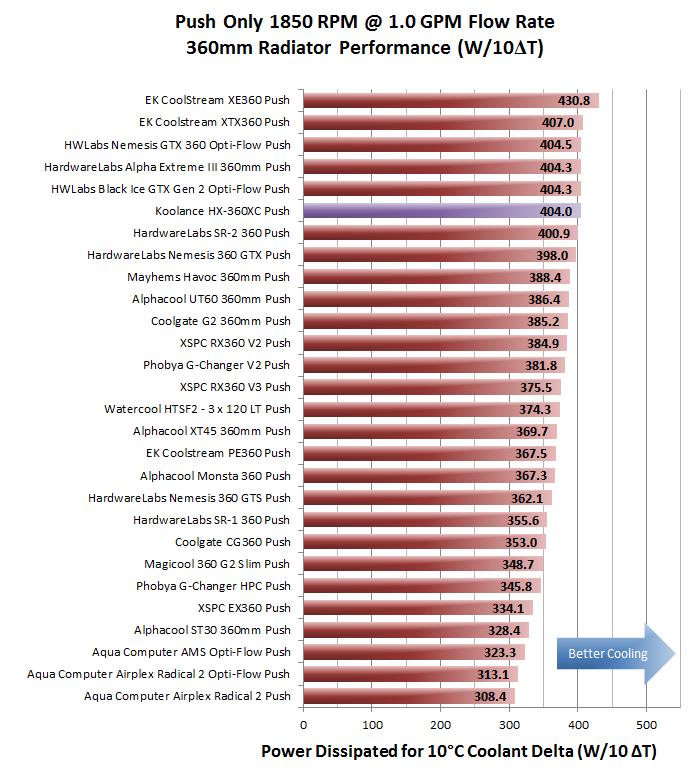
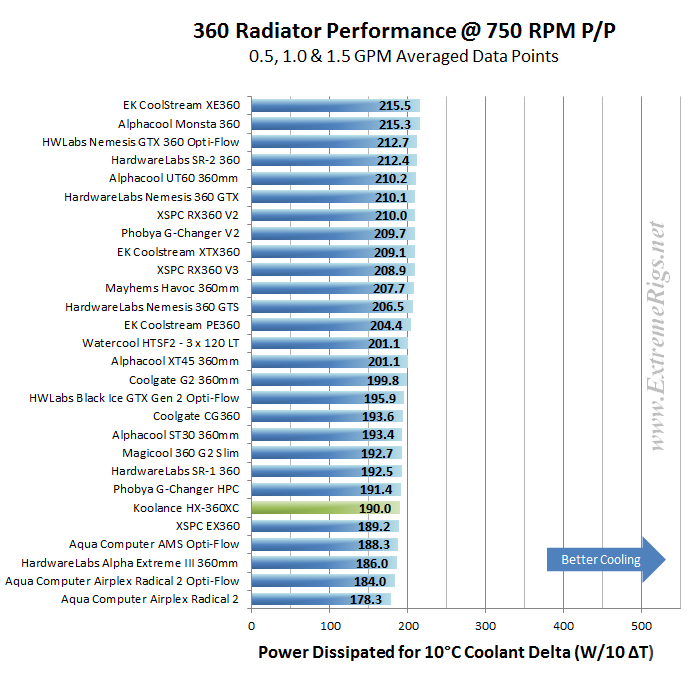
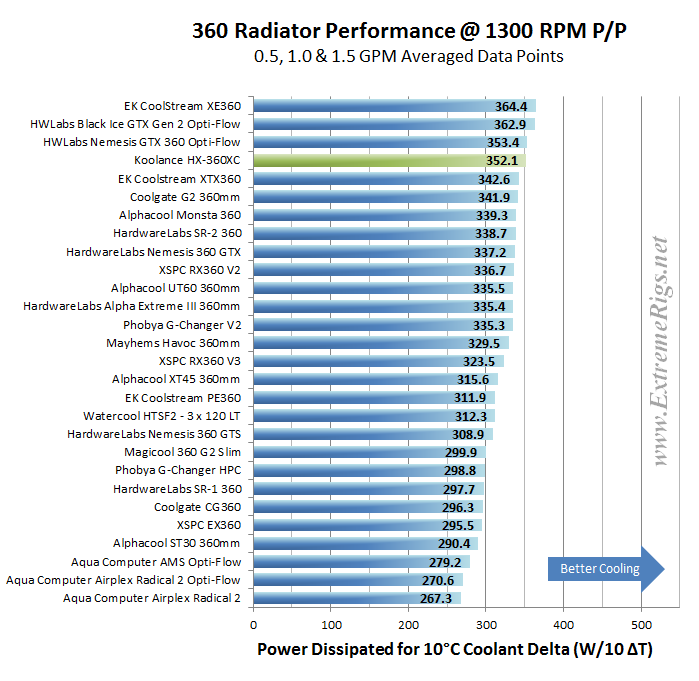
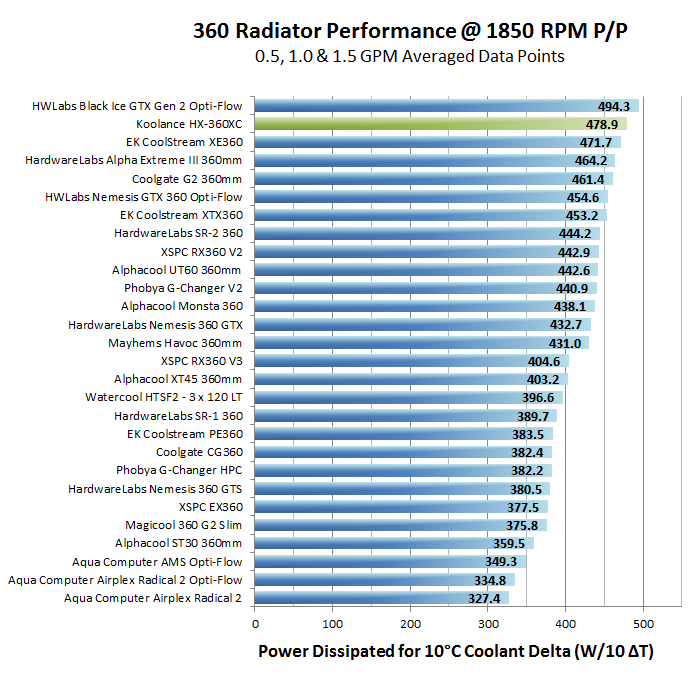
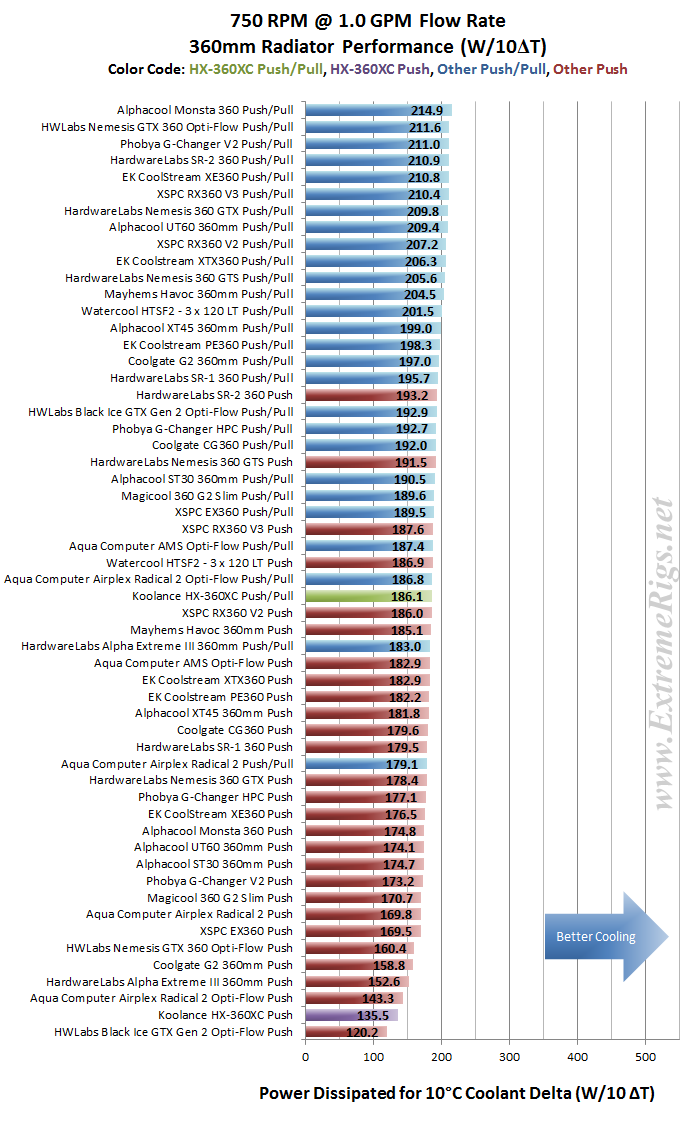
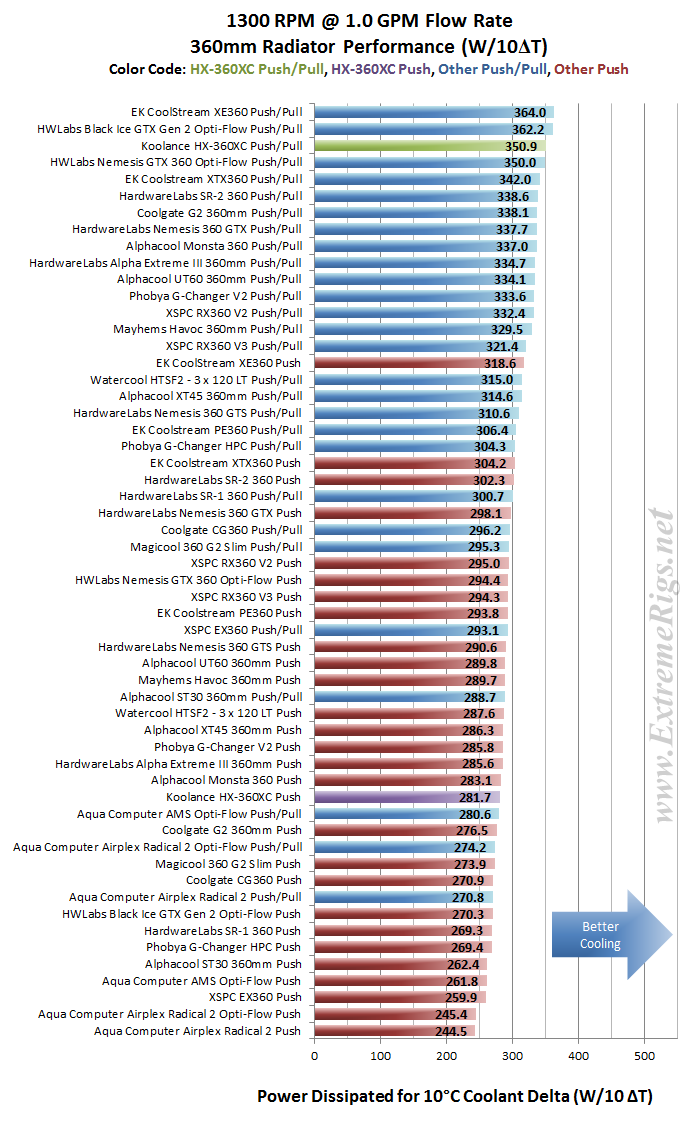
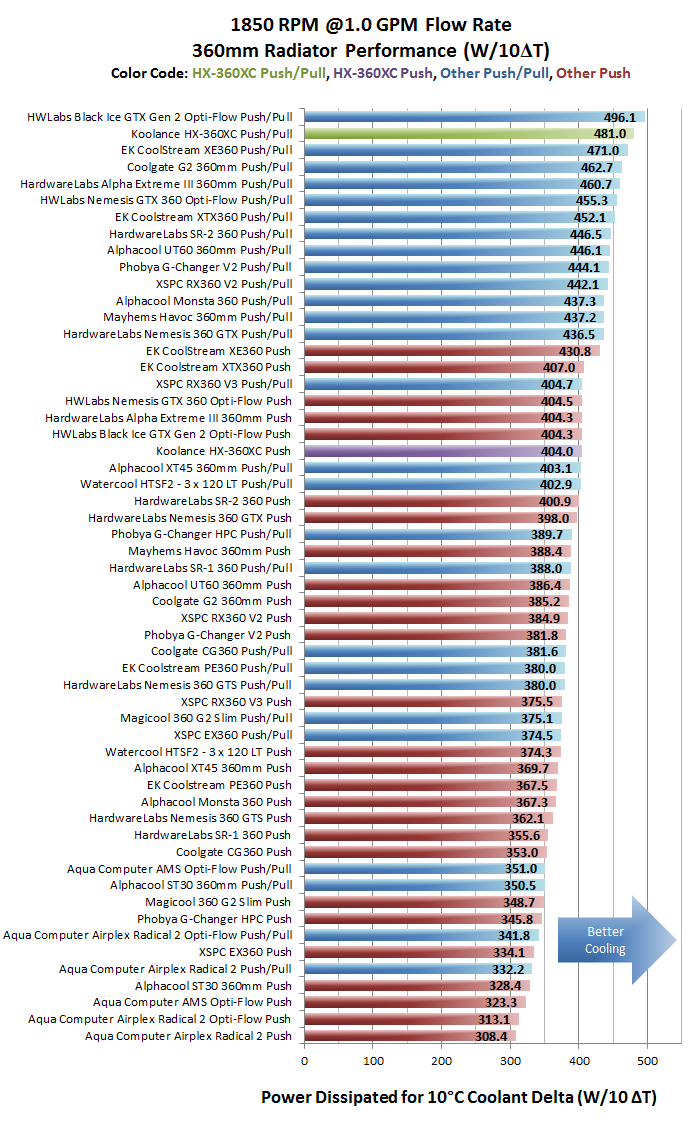
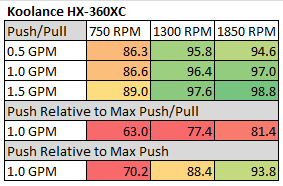
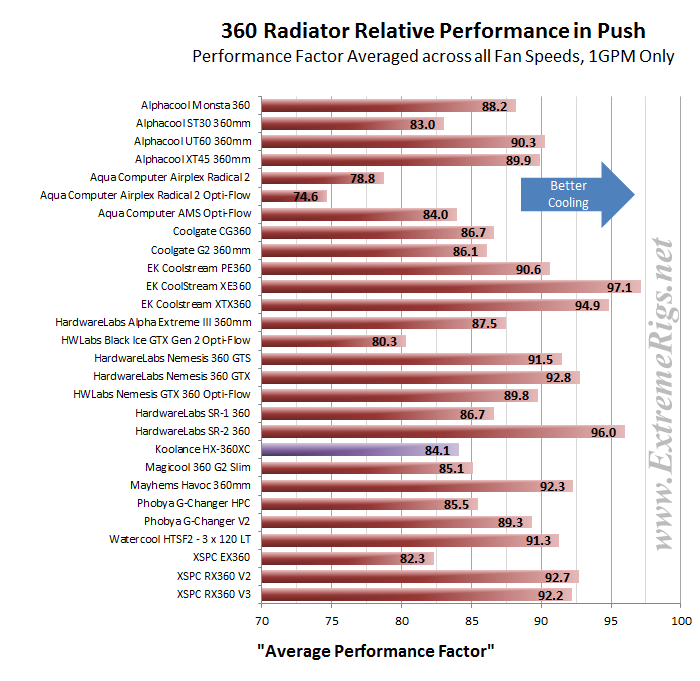
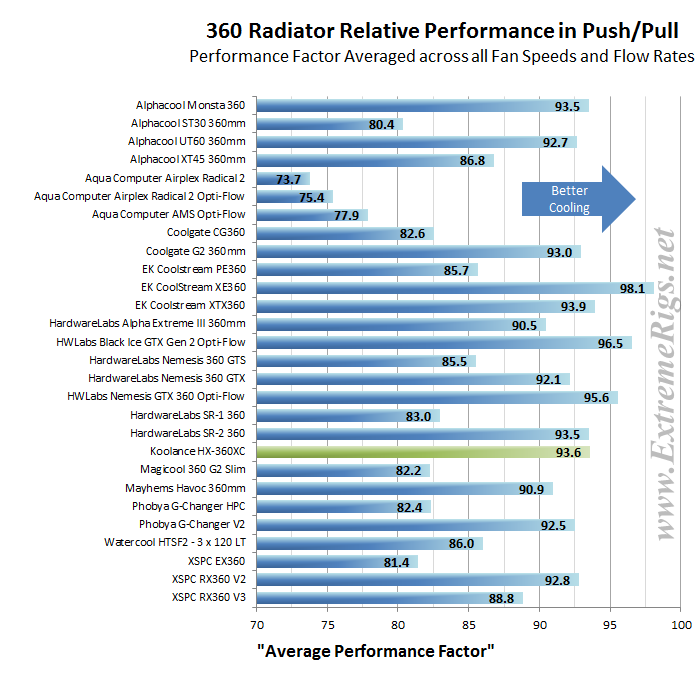




[…] Nemesis GTS 360 Radiator Hardware Labs Nemesis GTX 360 Radiator Hardware Labs SR-1 360 Radiator Koolance HX-360XC 360 Radiator Magicool G2 Slim 360 Radiator Mayhem’s Havoc 360 Radiator Phobya G-Changer V2 Full Copper 360 […]
[…] I do not think that any of their rads do as this was the same packaging as its bigger brother, the Koolance HX-360XC which we reviewed earlier in the year. They are shipped in what might normally be considered the […]
Comments are closed.